CardCaptors
December 11, 2021 · 0 comments
By Andrew Osmond.
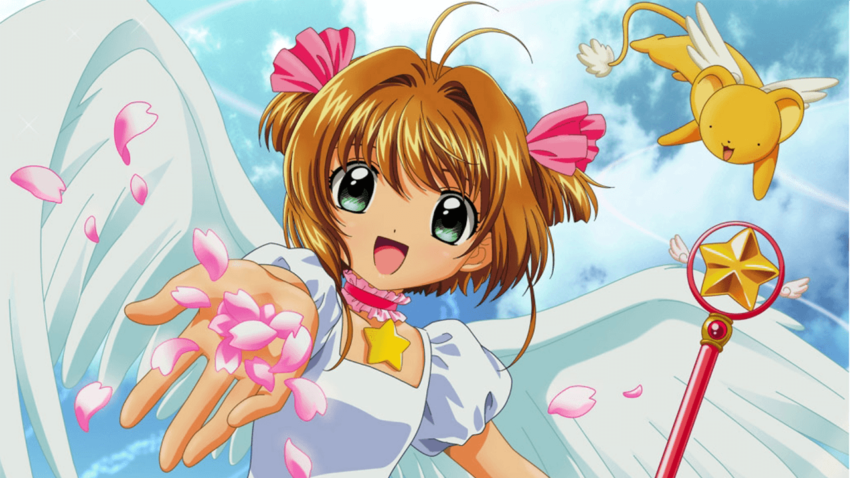
The Cardcaptor Sakura anime debuted in April 1998, two years after the manga started in Nakayoshi. It ran for 70 episodes, with two season breaks, and ended in March 2000, three months before the manga finished.
Cardcaptor was animated by the Madhouse studio, which foreign fans associated with adult fare such as Ninja Scroll and Perfect Blue. About the time Madhouse was making the cute Cardcaptor, it was also animating on the American horror series Spawn, based on Todd McFarlane’s cult comic. Madhouse had previously animated two of CLAMP’s darker titles: Tokyo Babylon, adapted as a two-part video, and the related X, which Madhouse made as a film in 1996 (a series followed in 2001).
The anime was directed by Morio Asaka, who’d previously directed a short 1994 film, CLAMP in Wonderland, celebrating the team’s work. As well as directing all the anime spinoffs, he’d go on to direct the anime of CLAMP’s Chobits and Ai Yazawa’s more adult NANA.
CLAMP’s own Nanase Ohkawa had been involved in previous anime of her group’s work, co-writing the X film and supervising the TV version of Rayearth (by Tokyo Movie Shinsha). On the Cardcaptor anime, she’s credited as the lead writer, and with scripting 53 of the 70 episodes. The Anime News Network site lists over two hundred key animators who worked across the series, which helps explain how it holds up so well.
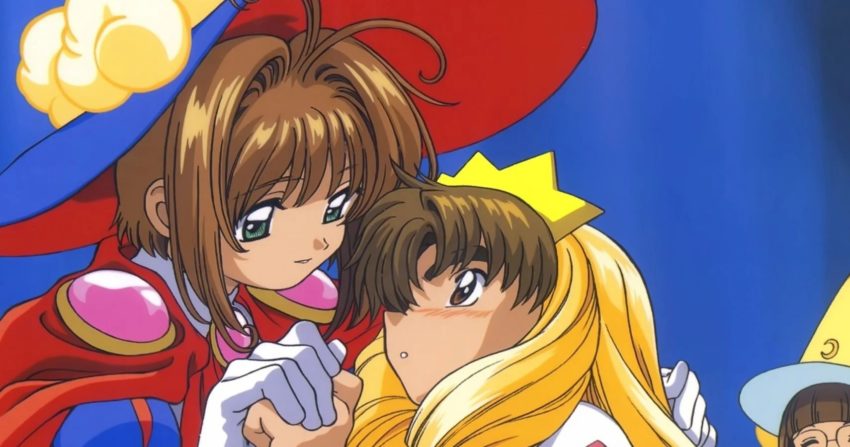
For one thing, the Clow Cards in the series aren’t just cute critters for Sakura to trace and zap. They’re imaginatively drawn, often eerie and sometimes threatening, more Doctor Who than Scooby Doo. The “Watery” card in one of the first episodes holds its victims underwater in a determined bid to drown them. Another card materialises in the form of Sakura’s dead mother, then lures the girl off a steep wall.
But it’s not just a “card of the week” show. The anime is driven far more by Sakura’s relationships with her friends and acquaintances. As in many anime for older viewers, much about the characters is only revealed over time, with some characters changing profoundly and others brought in later. For example, Sakura’s big brother Touya enjoys teasing and annoying her, but later we see how protective he is of Sakura, like any good big brother.
Much of the weight in the first episodes, though, is on Sakura’s friendship with the girl Tomoyo, her classmate in grade school. They’re already fast friends when we meet them in part one. Tomoyo loves to take pictures and videos of Sakura, and constantly comments on her friend’s cuteness. By part two, she’s found out everything about Kero, the powers he’s given Sakura and her card-catching mission. Rather than envying Sakura, Tomoyo is overjoyed by the situation.
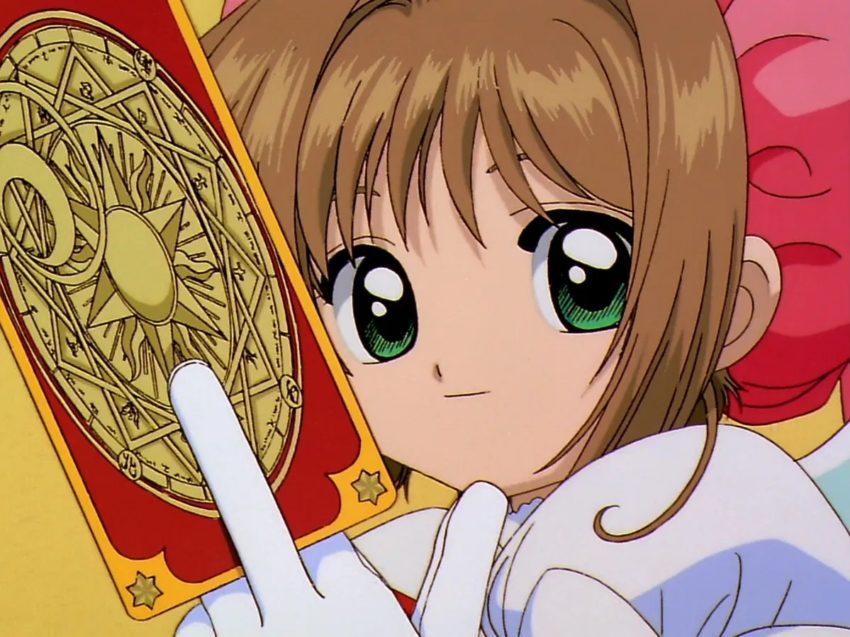
Thanks to her rich parents, Tomoyo can provide Sakura with a literal wardrobe of colourful costumes to wear as she embarks on each card-finding mission. In most magic girl series, the costumes – often the same costume through the series – come with the magic. Ohkawa, though, wanted to tweak this tradition by having the magic girl’s friend give them to her.
It’s obvious from early on that Tomoyo loves Sakura, deeply and obsessively, but also selflessly. You might notice the very first time you see Tomoyo in the anime, she’s teasing Sakura about her own obvious crush on Yukito, without a hint of jealousy. Tomoyo accepts Sakura doesn’t see her as anything more than her best friend, and she’s fine with that. For her part, Sakura thinks Tomoyo’s a little strange in always wanting to film her, but it doesn’t affect their friendship.
As Cardcaptor fans know, Tomoyo’s feelings for Sakura are one of multiple same-sex attractions in the series. Back at the turn of the century, many Western pundits would consider these controversial, especially in a kids’ cartoon. Today, of course, they look progressive, anticipating American cartoons such as the proudly queer Steven Universe by more than a decade. Even among anime, Sakura is unusual in having same-sex attractions at the heart of a children’s series, even if Sakura doesn’t have such feelings herself.
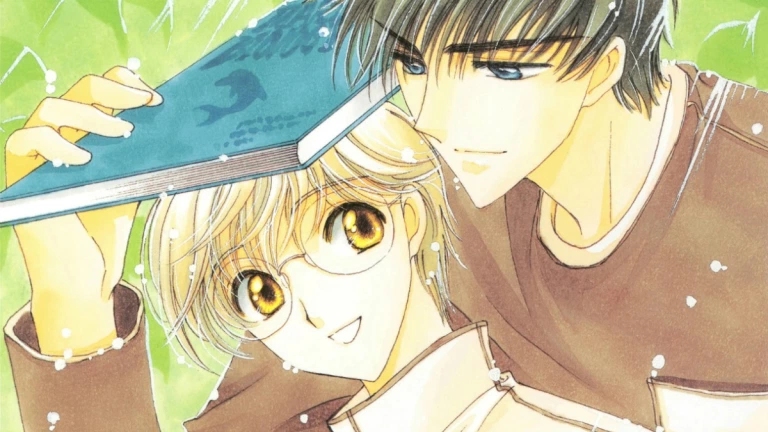
But Cardcaptor also depicts other attractions that viewers may find much more uncomfortable – age-gap attractions. Some are bigger stretches than others. At the relatively mild end, there’s the revelation that two Cardcaptor characters married when the man was 25 and the girl was 16 (legal but controversial in Japan). Then there’s the preteen Sakura’s own crush on the teenage boy Yukito, who treats her with fondness and affection. Is that sweet, or creepy?
The attraction that really crosses the line, though, is a marginal one that’s glimpsed occasionally. It involves another of Sakura’s grade school classmates, a girl called Rika. She’s voiced in Japanese by Tomoko Kawakami, who would die tragically young in 2011; she’d also voiced Utena in Revolutionary Girl Utena. In Cardcaptor, Rika is shown to have a romantic rapport with an adult male teacher, Mr Terada. At least the anime doesn’t go as far as CLAMP’s manga where the characters get engaged, though they’re still platonic.
Such situations do crop up in other mainstream anime; for example, in the Gundam series Iron-Blooded Orphans. The Cardcaptor case may simply illustrate how far manga authors take young girls’ romantic dreams, sometimes in directions to have readers blinking in disbelief. (The ending of the Bunny Drop manga, written by Yumi Unita, comes to mind.) In interviews, Ohkawa said she wanted to convey the message that love takes many forms, as Sakura learns from the people around her.
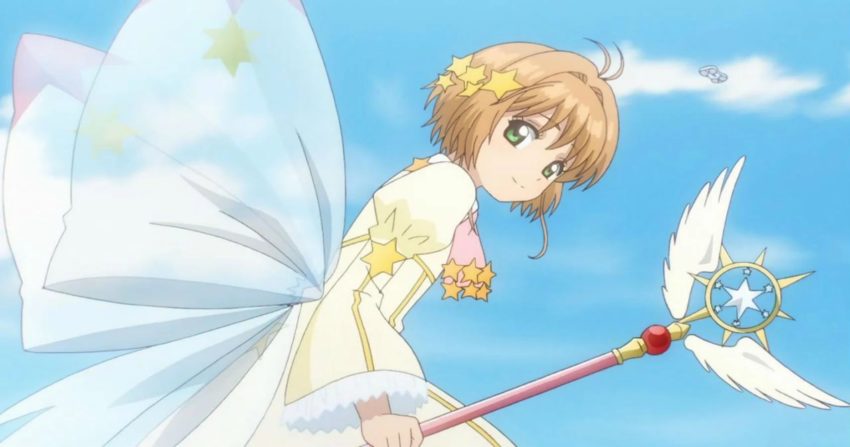
Such elements became issues when Cardcaptor was exported to America, not aimed at anime fans but at children, as in Japan. The anime’s first adaptation was by the Nelvana studio, which changed the name from Cardcaptor Sakura to Cardcaptors. In Britain, it was shown on Nickelodeon from May 2001, becoming one of the network’s top titles. Very unusually for an anime, it crossed to British terrestrial TV, being shown on the children’s block CITV from September that year (this was before CITV became a separate channel). Among anime fans, the Cardcaptors version is the epitome of bad localising, yet it’s a very interesting case study.
One of Nelvana’s most infamous changes had nothing to do with same-sex or age-gap relationships. It’s hinted in how the adjusted title drops Sakura’s name. Nelvana modified the show’s image to de-centre Sakura from her own series. In 2001, during Cardcaptors’international roll-out, I interviewed Jocelyn Hamilton, who was then Nelvana’s Vice-President of Production. “We bring (Syaoran) Li, the main boy character, more into the limelight,” Hamilton said. “After all, he has powers too. And beyond the main characters, we stress this is a team show.”
Syaoran is indeed a major character in the Japanese Cardcaptor, though he’s not present at the start. He’s introduced in the eighth anime episode as a transfer student, demanding Sakura hand over the cards she’s collected to him. Syaoran was part of Ohkawa’s vision of diversity. He’s a foreigner, hailing from Hong Kong, and the fact that this makes absolutely no difference to how Sakura sees him is crucial. Syaoran is introduced as Sakura’s adversary, but – mild spoiler – he grows into something much more.
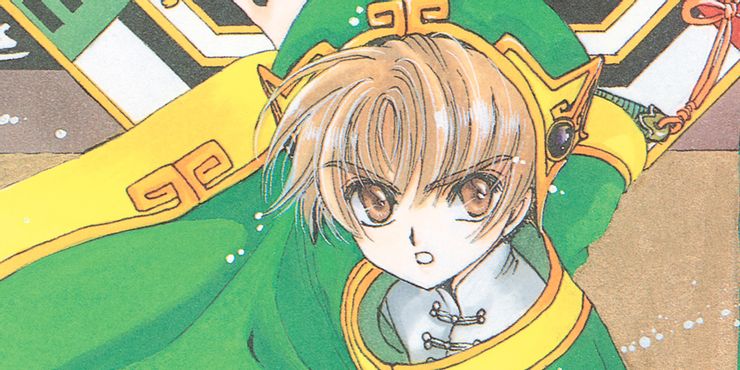
For Nelvana, Syaoran was pivotal to re-marketing the show. At least in the American TV broadcast, the first seven Japanese episodes – foregrounding Sakura and Tomoyo – were simply cut, meaning “Part 1” of the new Cardcaptors starts with the meeting of Sakura and Li. If that wasn’t enough, Kero was given a hectoring bro voice to man things up still further. It was all standard localising practice. Around the same time, a Fox Kids version of the fantasy anime Vision of Escaflowne deleted that show’s first episode, plainly because it was too girly.
“In America, a girl’s cartoon is considered sissy stuff,” reported the New York Times in January 2002, in a story about Cardcaptor called “Making Anime a Little Safer for Americans.” If that sounds odiously sexist, the article’s writer agreed, pointing out there was an anime counter-example. “It’s worth remembering that Sailor Moon was considered unlikely to succeed in the United States until it was noted that boys watched it as avidly as their sisters.”
Hamilton at Nelvana seemed to agree. “My six-year-old boy loves the cartoon (Cardcaptors),” she said. “I think it’s great boys can watch a show with a strong girl lead.” She was more sceptical, though, about viewer attention spans. “The North American audience has the attention span of a gnat. There are so many channels to choose from! So, we dropped the slower, less adventurous scenes and cut the episode running times slightly.” All Cardcaptor’s ongoing story elements were dropped.
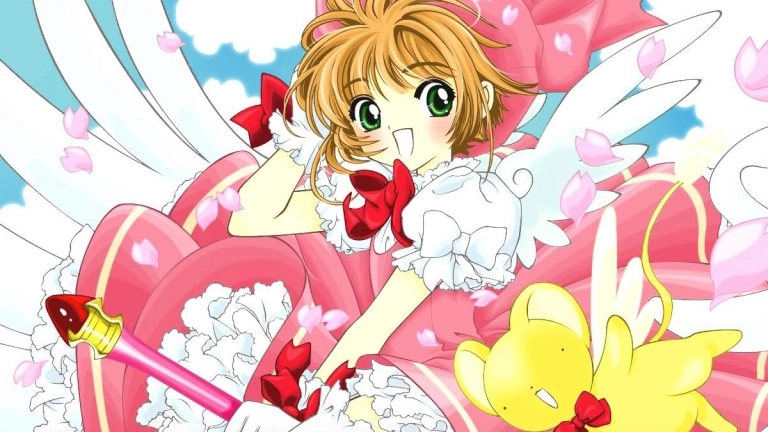
Other elements of the show were changed in Nelvana’s version, including some character names. Sakura herself kept her (plainly Japanese) first name, but her family name was changed from Kinomoto to Avalon. The Japanese score by Takayuki Negishi was ditched, because Nelvana wanted a “more New Age style” to push the show’s mysticism. On a more specific point, in the Japanese series two betrothed youngsters are first cousins. This was cut as such unions are considered incestuous (and illegal) in much of America.
The show’s unconventional romances were covered in the New York Times article. “No Japanese viewer would lift an eyebrow at the fact that Sakura is not only smitten with Yukito, a high-school junior, but actually spends an episode on a ‘date’ with him,” wrote the reporter. “But American viewers would be appalled… In the world of shojo [girls’] manga, such plot twists are seen as little more than girlish wish fulfilment – a harmless fantasy. But in a world where sexual molestation by teachers is a genuine concern, no one wants to assume innocence in a cartoon subplot.”
And this on the friendship between Sakura and Tomoyo: “(Tomoyo’s) intense devotion to Sakura – sewing elaborate costumes, documenting Sakura’s successes on video, assuring Sakura that she ‘really likes’ her – verges on the creepy. No wonder the American version simply paints Madison (the renamed Tomoyo) as a video obsessive who sees Sakura’s adventures as mere camera fodder.”
Readers today may be appalled by any suggestion of equating child same-sex attractions with child molestation. But these were different times. The Cardcaptors dub came only a couple of years after American televangelist Jerry Falwell, who crusaded against anything conceivably gay, condemned another children’s import from a decadent country, the BBC’s Teletubbies. Falwell accused the handbag-carrying Tinky Winky of seditiously promoting the idea that “gay is okay.” Many of Tinky Winky’s fans thought he was right.

The erasure of gay and non-binary anime characters was old news in America. Viewers of Battle of the Planets in the 1970s – the American edit of the anime Science Ninja Team Gachaman – never knew the villain “Zoltar” was originally a sex-changing hermaphrodite. And given Cardcaptors’ problems with cousin marriage, it’s hilarious that at about the same time, the Americanised Sailor Moon turns two of its characters (Sailors Neptune and Uranus) into cousins, to hide their homosexuality. As commentators pointed out, the girls still looked gay; now they were incestuously gay.
But for a more nuanced perspective on the Cardcaptors dub, readers are recommended to a recent article (June 2020) on the Den of Geek website. It’s entitled “How Cardcaptor Sakura’s Queerness Broke Through Censorship.” In it, the writer Shamus Kelley remembers how he himself encountered Nelvana’s Cardcaptors at nine years old.
“I just enjoyed it for what I thought it was; an action series with a unique look and a world I could easily imagine myself in,” Kelley writes. “And I still picked up on the queerness. Not directly, mind you… I still hadn’t had my first crush yet. But even with all the edits in the show, I could feel there was something more going on between the characters.” Kelley points out that Nelvana didn’t change the animation, leaving moments where, for example, a boy blushingly reacts to another boy’s presence.
“I wouldn’t have been able to put into words at the time,” Kelley continues, “but I knew the show wasn’t as straight as it was trying to pretend it was. You can change the words but the powerful queerness in that animation? You can’t get rid of it. It had a power over me I wouldn’t be aware of until later…”
At the article’s end, Kelley describes his joy at finding the original CLAMP manga, with the queer themes intact. And he acknowledges he only found the manga because of Nelvana’s Cardcaptors. “I know it’s weird to praise the series with its heavy censorship that tried to hide all the queer elements but without it I never would have found the most positive, uplifting, and validating piece of queer media when I needed it the most. They tried to keep it hidden but queerness will always shine through and the people who need it the most will do whatever they can to find it.”
Now, thankfully, the real, original Cardcaptor Sakura is available, letting viewers share the richness of Sakura’s journey.
Andrew Osmond is the author of the British Film Institute’s 100 Animated Feature Films. Cardcaptor Sakura is released in the UK by Anime Limited.
Leave a Reply